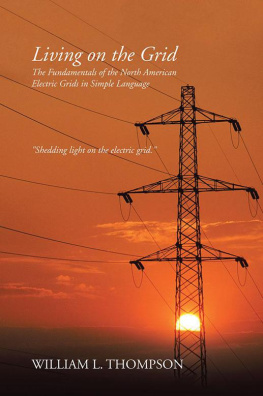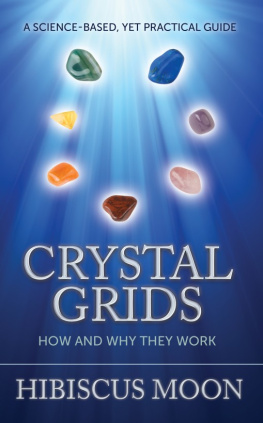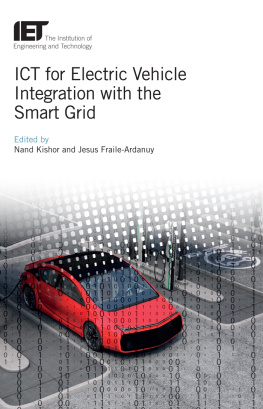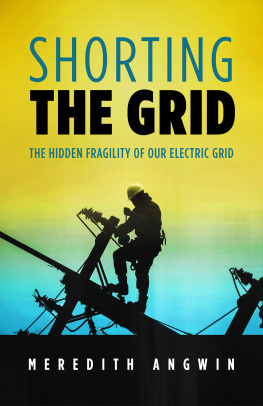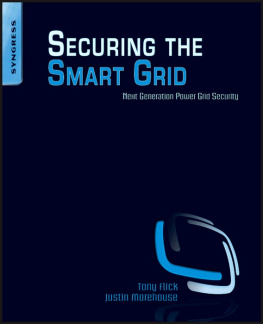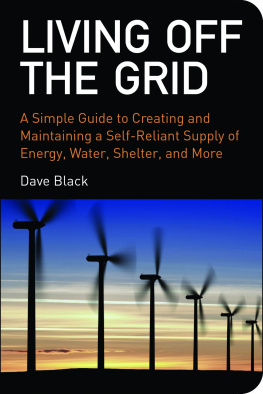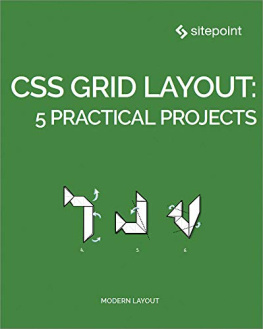Living on the Grid
The Fundamentals of the North American Electric Grids in Simple Language
William L. Thompson

Living on the Grid
The Fundamentals of the North American Electric Grids in Simple Language
Copyright 2016 William L. Thompson.
All rights reserved. No part of this book may be used or reproduced by any means, graphic, electronic, or mechanical, including photocopying, recording, taping or by any information storage retrieval system without the written permission of the author except in the case of brief quotations embodied in critical articles and reviews.
iUniverse
1663 Liberty Drive
Bloomington, IN 47403
www.iuniverse.com
1-800-Authors (1-800-288-4677)
Because of the dynamic nature of the Internet, any web addresses or links contained in this book may have changed since publication and may no longer be valid. The views expressed in this work are solely those of the author and do not necessarily reflect the views of the publisher, and the publisher hereby disclaims any responsibility for them.
Any people depicted in stock imagery provided by Thinkstock are models, and such images are being used for illustrative purposes only.
Certain stock imagery Thinkstock.
ISBN: 978-1-4917-9043-4 (sc)
ISBN: 978-1-4917-9045-8 (hc)
ISBN: 978-1-4917-9044-1 (e)
Library of Congress Control Number: 2016903046
iUniverse rev. date: 05/20/2016
An analysis of the North American electric grid: what it is, who owns it, how it is controlled, what keeps it going, and what happens when it blacks out. Written by an electrical engineer who was in the business for more than thirty-eight years and who has tried to simplify this complex topic for the person who is curious about it and also for those who are new to the business.
To all the operators working seemingly never-ending shifts to keep the lights on for the rest of us. You are an amazing group of people.
Contents
Chapter 1
Chapter 2
Chapter 5
Why a book about the electric grid? Our society is dependent on our electrical infrastructure, yet most of us know little about the grid. The available books on the subject present highly technical descriptions of the electrical engineering aspects of the grid that the average person would not understand or, for that matter, read. This book has been written by someone who understands the technical aspects of the electric grid and who has endeavored to describe the main aspects for the general public. I believe that this book will fill a void by providing a simple description of the grid, including how the grid is controlled, how it is regulated, energy-generation alternatives that support it, and what the future of the grid may be.
There are many topics that are addressed in simple, plain language, far more topics than were relevant to the field of electrical engineering when I first encountered it. System economics, alternative fuels for electric generation, regulatory rules, environmental concerns, reliability, and wholesale competition are some of the topics addressed hereinand at a level that should be interesting and informative to many, including those of us not in the electricity business. The electric grid is a very interesting thing that is far more complicated than most people realize. After reading this book, one will have a much better appreciation for this infrastructure on which we all depend. The personal stories and simple analogies that the author presents will go a long way toward increasing a readers understanding and, hopefully, enjoyment of the subject.
Cleve Moler, cofounder of Mathworks and first author of MATLAB
Our way of life in the United States is dependent on electricity, and the flow of electricity in the United
States is dependent on the electric grid. However, most people have very little understanding of what the grid is or of what it does. I spent twenty years working inside a control room that was responsible for the operation of a significant part of the grid in Virginia and North Carolina. Over that period I showed our control center to hundreds, if not thousands, of people. Many people asked me to suggest a book they could read that would explain the grid in simple terms. The truth is that I have yet to see such a book for the general public, as most books that include discussions of the grid are far too technical for anyone but electrical engineers. My intent in writing this book is to meet the need for a simple explanation of the grid that both engineers and non-engineers can understand, leading them to appreciate what this huge interconnected machine does for them.
This book will answer basic questions and satisfy curiosity about the electric grid. I have used simple examples and diagrams, avoiding detailed explanations of the laws of physics as much as possible. To help with an understanding of the concepts presented, I have interjected stories of actual events. Wherever possible, I simplified my explanations to the extent that I left out complications that are not needed for an overall understanding. I have not attempted to address every facet of electrical engineering or to address every complexity of grid operating paradigms.
If someone is looking for a more technical description of the grid, or of the laws of physics related to electricity, then one may find many other books that provide such information.
I have presented generic data in a few places (such as the percentage of energy derived from coal) only to provide scale. Information such as this is readily available, so rather than use profuse footnotes, I have assumed that anyone can probe deeper if desired. There are many references in the Suggested Reading section to get someone started.
I am a retired electrical engineer with thirty-eight years of experience in the electric utility business and with several years of consulting experience after retirement. For the last twenty years of my career, I was the person in charge of grid operations at Dominion Virginia Power. The electric system at Dominion is one of the top ten in total size in the United States, with a peak load recently exceeding 21,000 megawatts. Over those twenty years, I experienced the need to order rotating blackouts throughout Dominions VirginiaNorth Carolina territory, witnessed the Enron rise and fall, went through the Y2K scare, experienced the northeast blackout of 2003, witnessed the federal governments drive to create a competitive wholesale market, and saw attempts by the states to institute retail competition for electricity.
I should add that all the opinions, observations, and predictions in this book are my own and are not endorsed by Dominion Virginia Power. Dominion has not endorsed this book and is not providing any commission for the writing. And, of course, any errors are my own.
First, I must thank all the people who helped me survive in the complex business of electricity delivery. They patiently explained to me how things work, and I truly appreciate that.
I offer special thanks to people who have helped with the development of this book, starting with Cleve Moler, who encouraged me to continue with the project and provided some very good advice, which I have tried to heed. I cant thank enough Monty Jackson, who spent a great deal of his own time reading and commenting on some of the early chapters and who encouraged completion of this effort. Then there is my sister, Ruth Walton, who read through some parts of the book and pointed out things that didnt make sense so I could rework them. My colleagues Mike Regulinski and George Marget advised me on the position of Dominion Virginia Power in light of my developing this book. John Lambert and Brian Garbera encouraged me to continue writing and gave me some great ideas about things to delve into. And last but certainly not least is my wife, Betty Thompson, who encouraged me, put up with my sitting at the computer when I should have been doing something else, proofread my drafts, and sketched most of the diagrams provided in this book.
Next page
